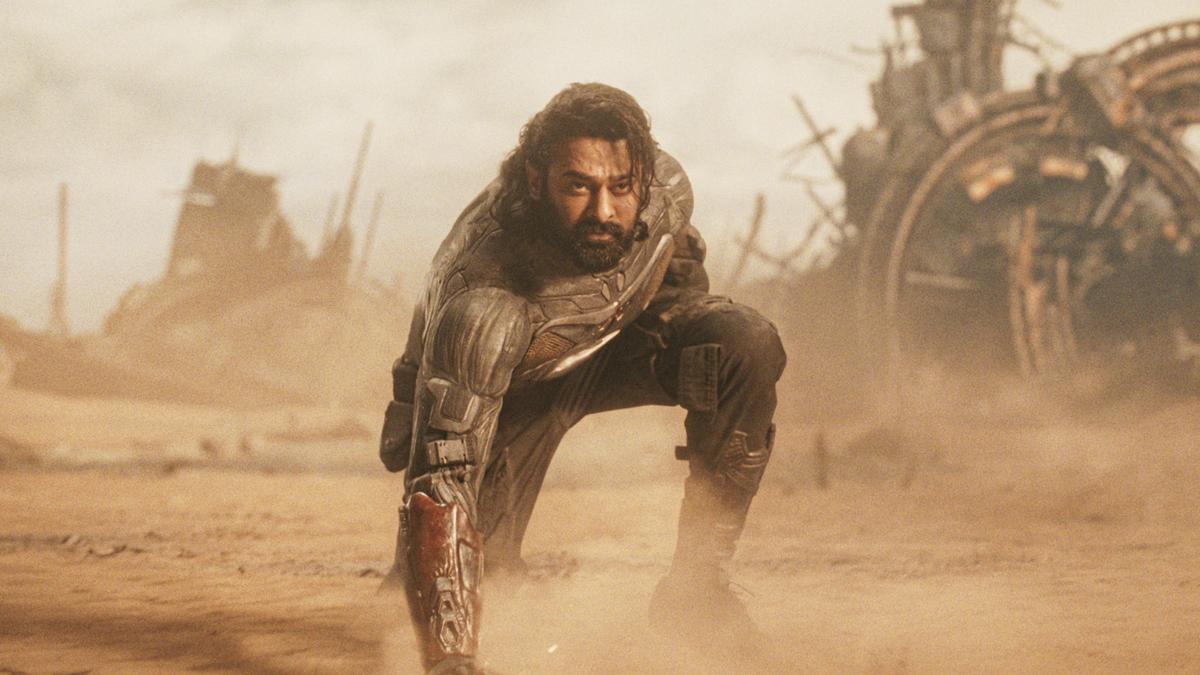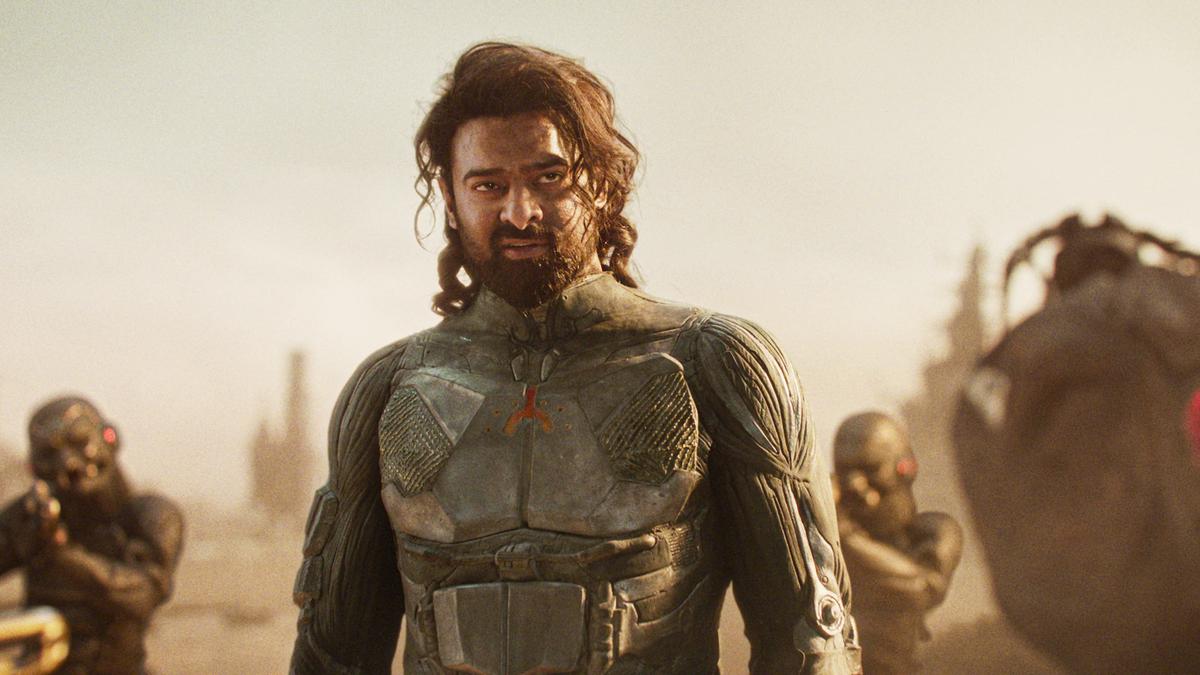Santosh Narayanan | Photo Credit: Thamodharan B
The road leading to Santhosh Narayanan’s studio may be rough, but the experience inside is not at all difficult. The vacant land in front of his house has been converted into a parking space for his boat, which he found during the floods, and those who step into his studio are greeted by his two puppies, while we sit next to his audio console and talk about it. Kalki 2898 AD This is possibly his largest project in terms of scale.
Excerpts from the conversation:

Adi festival of Adi Tala
“I think he shot Kalki I was a part of this album for about seven to eight months before I was cast in it. When they approached me, my first question was ‘Why me?’ And director Nag Ashwin told me that he loved the album. Cuckoo; I was very happy to hear it. He told me that he needed a soulful album and there was room for something epic given the story of the film. While I was given complete freedom with the epic aspects of the film, the soulful parts are something that will be incorporated in the sequel as well. The thought process involved creating different worlds; like Kasi, Shambhala, Lab and Complex. I have a folder called World Box, and as we came up with tracks, we segregated them based on these categories.”
Also read:‘Kalki 2898 AD’ movie review: Prabhas and Amitabh Bachchan shine in a gripping drama
“Sumati (played by Deepika Padukone) is the central character and her theme was the first theme we tried to figure out. It had to share the epic nature of the film and also show her loneliness. Then we built a few more themes around her; like one for the extraction process, one for her escape, and another about how important she is to the other communities left in that world.”

A scene from ‘Kalki 2898 A.D.’ | Photo courtesy: Special arrangement
Entering the world of Nag Ashwin
“I usually ask for references as an indication of the director’s expectations, but KalkiI had no reference. Nag used to send me working CGI pictures and then I understood the real scale of the film. It has been made at a magnitude that I thought was not possible in India. He wanted me to match the spirit of the music with his vision. Nag rarely reacts and I didn’t know this initially. When I gave him the theme song, he just said “good” and I thought he didn’t like it. When I met the producer and told him that he said so, he was very happy. Then I realised that he doesn’t use exaggeration; he is a saint in a way (Laughs,
Melodies of the past and future
“I personally wanted to add the sounds of the eighties and nineties Kalki’s album. I am a huge fan of Ilaiyaraaja sir, MSV sir and AR Rahman sir and I wanted it to be a tribute to them. The ‘Bhairava Anthem’ is a tribute to Raja sir, the ‘Veera Dheera’ track that you hear at the end during the big reveal is my tribute to MSV sir, and it is voiced by Ananthu who did that. Vada Chennai ‘Rajan Theme’. The way the mother was treated in the lab is dedicated to Rahman Sir. I have left a lot of personal touches in the film. The whole ‘Mahabharata’ area is also my tribute to the wonderful duo of SS Rajamouli. Garu and M.M. Keeravani Garu,

“The complex song (‘Ta Takkara’) is a necessary song given its prominence with our protagonist, but the song had to be quirky. We wanted to connect it to the dubstep and psy-trance era. We also wanted an orchestral space and folk music from India. For a film of this scale, very few changes were made to the script; this gave us an amazing edge with the music and we didn’t have to beat around the bush with the theme.”

A scene from ‘Kalki 2898 A.D.’ | Photo courtesy: Special arrangement
“The film is set in the future, where the survivors are a mix of languages, cultures and communities. I wanted to bring that into the album and the score. For example, Diljit Dosanjh’s Punjabi lines (in ‘Bhairav Anthem’) will remain the same in every language. I have also recorded Amitabh Bachchan sir for a song, and he has one of the best voices in history. He becomes like a child when talking about music and I wanted to retain his Hindi lines in other languages as well. There is even a Tamil one Oppar But it will appear the same in all versions and ‘Veera Dheera’ will remain in Telugu. KalkiThis album is my tribute to the multicultural identity of India.”

When music can be universal then why pan-Indian?
“My biggest inspiration came in 2008 when Rahman sir won the Oscar Slumdog MillionaireThe biggest thing was how they did what they did – their own original music – and the world embraced it and loved it. They didn’t have to cater to a different audience but played to their strengths. The entire music team surrendered to the vision of the production and the director. Only then could we create something new and raw. I am so happy that it is getting commercial success as well Kalki Could possibly become the starting point of a new wave of epic cinema.”

“I learn from musicians whose work excites me and Kalki I had to meet hundreds of them. I felt responsible for once in my life (Laughs) because we had almost two terabytes of music for this film. Every day was a lot of work and it affected all of us. But it was a great experience. I learnt how important our health is because it can affect the way someone thinks. Despite the kind of pressure Nag was under, he always remained calm. Sometimes we had to work continuously from 9 pm to 5 am and it was a test of physical stamina. We also had to work creatively and sometimes it can get you down. But it was the biggest learning experience for me and thanks to the people I worked with, it feels like I have a lot of teachers now.”
He adds, “Its commercial success Kalki It is very important. Many of the directors I have worked with called me and wished me good luck for the film. Everyone was excited about this film. A friend of mine, director Nalan (Kumarasamy) told me that Kalki This will open the doors for commercial films on a large scale.
Santosh Narayanan | Photo Credit: Thamodharan B
Independent in every sense
“My studio is almost ready; it will form the basis of what I wanted to create. I have a new company called Rakita Entertainment (based on her song Jagme Tandiram) and I want to create an ecosystem with my team that will discover talents. My only preference at this stage is that they should be Tamil speaking expatriates from Tamil Nadu or other countries. I want to identify two artistes for the first year and provide them access to the studio and its facilities. This will help create songs like ‘Enjoy Enjaami’, ‘Kacchi Sera’ and ‘Naan Kudikka Poren’. With about 10 to 15 such songs, we can create an industry and it can be as big as the film sector or even bigger. If we can do that, we can do something about the way the Punjabi indie scene has grown which includes people like Sidhu Moose Wala, Diljit Dosanjh and AP Dhillon.

“For a song like ‘Enjoy Enjaami’ we were not paid anything. So I had to put up a video on social media; something I have never done before. I am also responsible for the artistes who work with my company, so I had to stand up and speak out. If this can happen to me – to anyone involved in the music industry around the world – then it can happen to anyone. This will be a battle that will end and it is currently in the legal system. I am hell-bent on making sure that the three artistes involved – Arivu, Dhee and me – get compensation, which will be a huge win for indie music.”